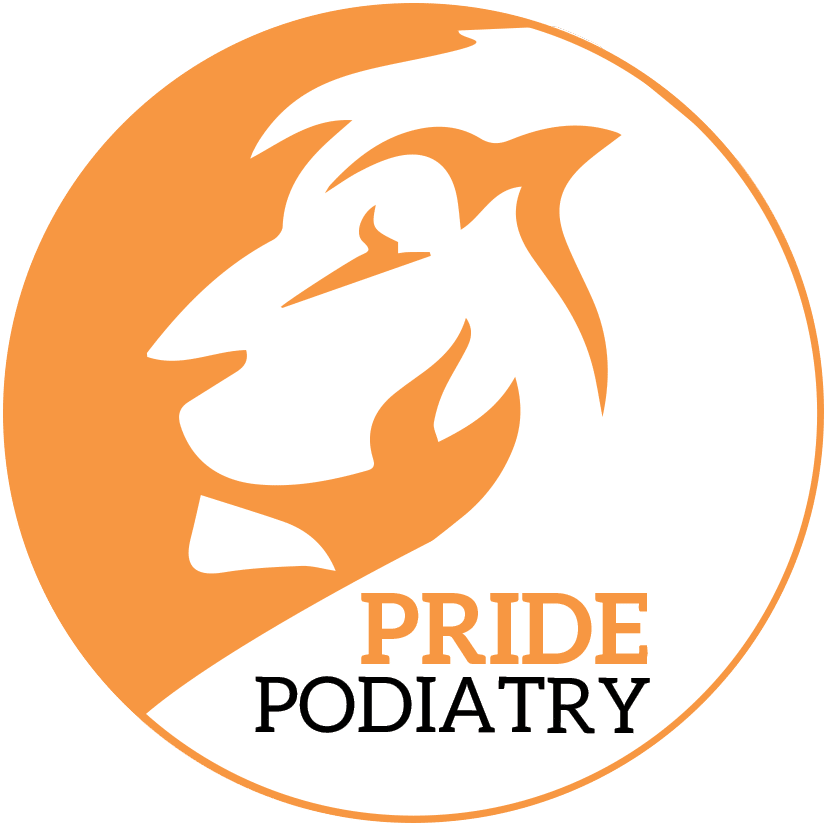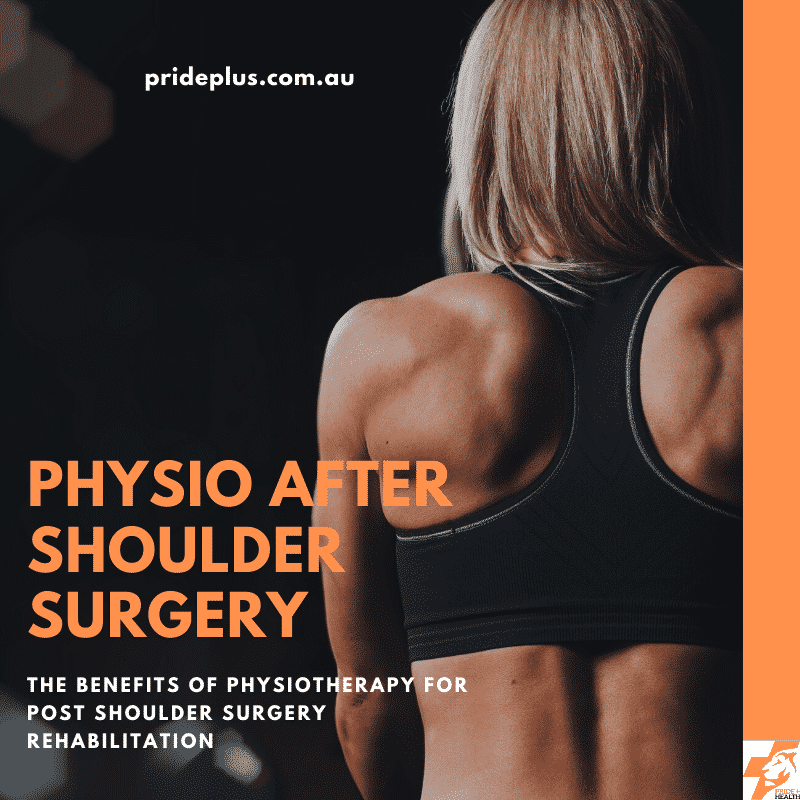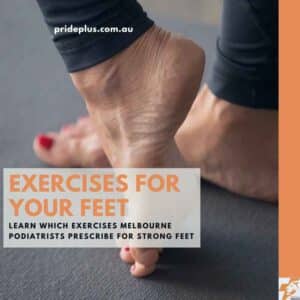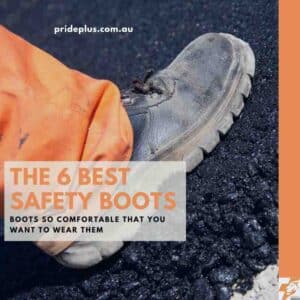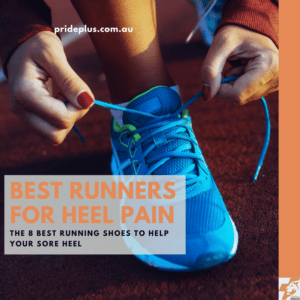Why post shoulder surgery rehabilitation with a physio is vital.
If you have had to have the surgeon open up your shoulder then you will need some post shoulder surgery rehabilitation. Let me talk to you about this amazing joint.
The shoulder is the most flexible joint in your body. It can move in every direction and plane, you remember the song from your childhood? Your shoulder can do the hokey pokey and wave it all about.
Unfortunately, just like the hokey pokey it can end in tears. With all the waving all about this greater mobility comes with the compromise of stability. As a result, the tissues supporting the shoulder have to cope with greater stress and this increases the susceptibility to injury.
Before we get into the benefits of physiotherapy after shoulder surgery, let’s take a look at some of the problems that can lead to shoulder surgery.
The types of injuries that can occur to the shoulder varies with demographics. The most common shoulder issues in younger populations are anterior shoulder pain, shoulder instability, recurrent shoulder dislocations. Whereas, in the elderly population shoulder pain related to rotator cuff tears or osteoarthritis are more common.
The best evidence we have recommends physiotherapy before considering any surgical options. However, surgical options may be recommended for individuals who failed to respond well to active rehabilitation. It is not surprising that surgery for musculoskeletal conditions when paired with active post-op rehabilitation are key for achieving optimal long-term outcomes.
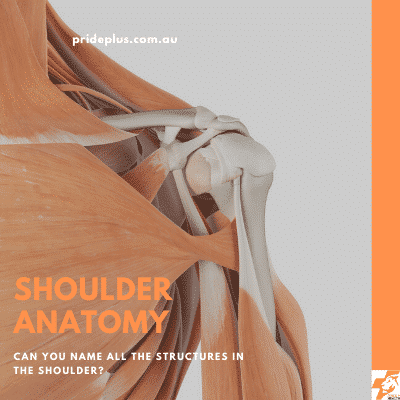
Shoulder Anatomy 101
To begin post shoulder surgery rehabilitation, a good understanding of the anatomy of the shoulder would help you understand your capacity post-surgery and provide better care for your shoulder.
The shoulder is a ball-and-socket joint. It is made up of 3 bones: the upper arm bone (humerus), shoulder blade (scapula) and collarbone (clavicle).
The ball at the top end of the arm bone fits into the small socket of the shoulder blade to form the shoulder joint. To put it in perspective, for the ball to sit centred on the socket, is similar to having a golf ball sit on a tee.
As you would imagine, that is not the most stable structure.
To keep the ball centred in the socket, the labrum and muscles around the socket, especially the rotator cuff muscles have to work really hard. With weakness of the local and regional muscles, tear of the rotator cuff/labrum, osteoarthritis of the ball/socket changes in function and pain may arise.
Do you have (shoulder) rhythm?
Most healthy shoulders also move in a pattern commonly known as the scapula-humeral rhythm. The describes the interaction between trunk, shoulder blade and the arm bone in order to achieve full range of motion. Factors such as the strength, endurance, coordination, length of your muscles and the stiffness of your joints can affect the scapula-humeral rhythm and your functional range of movement.
Don’t take my word for it!
Test your shoulder rhythm.
Try sitting in a slouched position and reach as far upwards or to the side (only try this on your healthy arm). You would notice that your movement is restricted or even painful.
Unfortunately, having a sling on for 4-6 weeks post shoulder surgery tends to put you into that position. Just as well there’s a physio waiting for you to help you get your rhythm back.
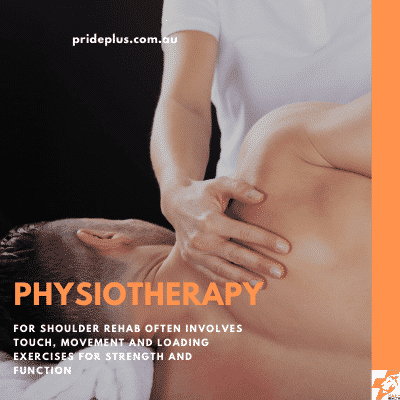
Just had shoulder surgery?
Initially, resting your operated shoulder in a sling would be helpful for the healing of your operated shoulder. This is especially important for surgery involving repair of the rotator cuff as they can be vulnerable to re-tear depending on how extensive the initial damage was.
The downside of immobilisation is that it also results in reduced loading through the joints, ligaments & muscles. Studies have shown that a few days of immobilisation is sufficient to bring about significant weakness and stiffness. Improving joint mobility and muscle strength in the later stages would be necessary for the return of function.
A fascinating fact is that most patients are found to have dysfunctional shoulder muscles preoperatively? A history of rotator cuff pathology is commonly found in patients with long head of biceps tear and lesion of the labrum. It has been suggested that the weakness of rotator cuff can contribute to excessive loading of the biceps and labrum that over time manifest into an injury.
Elderly patients who undergo shoulder replacement typically experience long-standing shoulder pain resulting in disuse of the painful shoulder. Likewise, it is also common for this group of clientsto have deficiency in the rotator cuff and weak shoulder muscles.
Post shoulder surgery rehabilitation to address the underlying cause of injury/pain would prevent the recurrence of injury and improve long-term outcomes.
Athletic shoulders post surgery?
If you are an athlete you would be aware that overhead activities can place a huge demand on the shoulders. Unlike us regular post-op patients who require rehabilitation for restoration of their range of movement and strength, overhead athletes need to regain their ability to generate additional power and attenuate excess load through their shoulder.
Most studies recommend overhead athletes who are returning to sport have an extended period of advanced strength and conditioning. This is to optimise the kinetic chain and improve the capacity of the shoulder.
Finally, shoulder surgery also increases the risk of developing Frozen Shoulder and Complex Regional Pain Syndrome. Such conditions develop in up to 10% of the post-op patients and would require modifications in the management approach to avoid further aggravation.
Managing your shoulder after surgery can be daunting but it does not have to be too complicated.
As a physio in Pascoe Vale I’m here to help you with any shoulder pain or post surgery rehabilitation that you might need. Our physio team have the skills and the equipment (you should see our gym in Pascoe Vale) to guide you through your post shoulder surgery rehabilitation.
You can book in online with us here.
References
Saltychev, M., Äärimaa, V., Virolainen, P., & Laimi, K. (2015). Conservative treatment or surgery for shoulder impingement: systematic review and meta-analysis. Disability and rehabilitation, 37(1), 1-8.
Itoi, E. (2016). Surgical repair did not improve functional outcomes more than conservative treatment for degenerative rotator cuff tears. JBJS, 98(4), 314.
Akeson, W. H., Amiel, D., Abel, M. F., Garfin, S. R., & Woo, S. L. (1987). Effects of immobilization on joints. Clinical orthopaedics and related research, (219), 28-37.
Pill, S. G., Walch, G., Hawkins, R. J., & Kissenberth, M. J. (2012). The role of the biceps tendon in massive rotator cuff tears. Instructional course lectures, 61, 113-120.
Sgroi, T. A., & Cilenti, M. (2018). Rotator cuff repair: post-operative rehabilitation concepts. Current reviews in musculoskeletal medicine, 11(1), 86-91.
Goh, E. L., Chidambaram, S., & Ma, D. (2017). Complex regional pain syndrome: a recent update. Burns & trauma, 5(1), 2.
